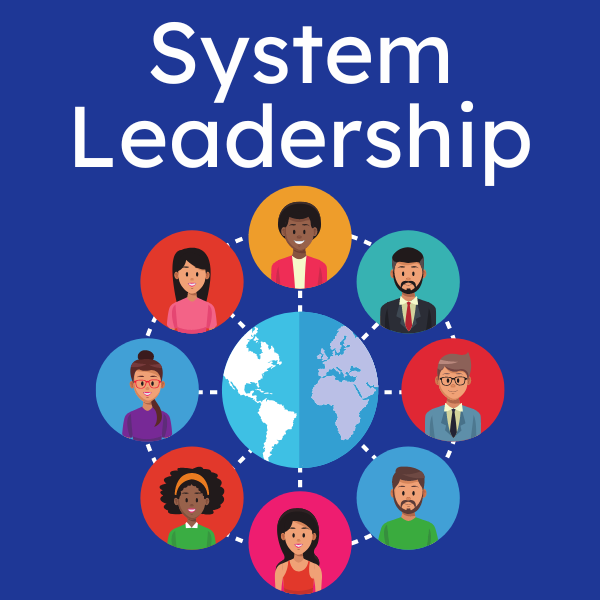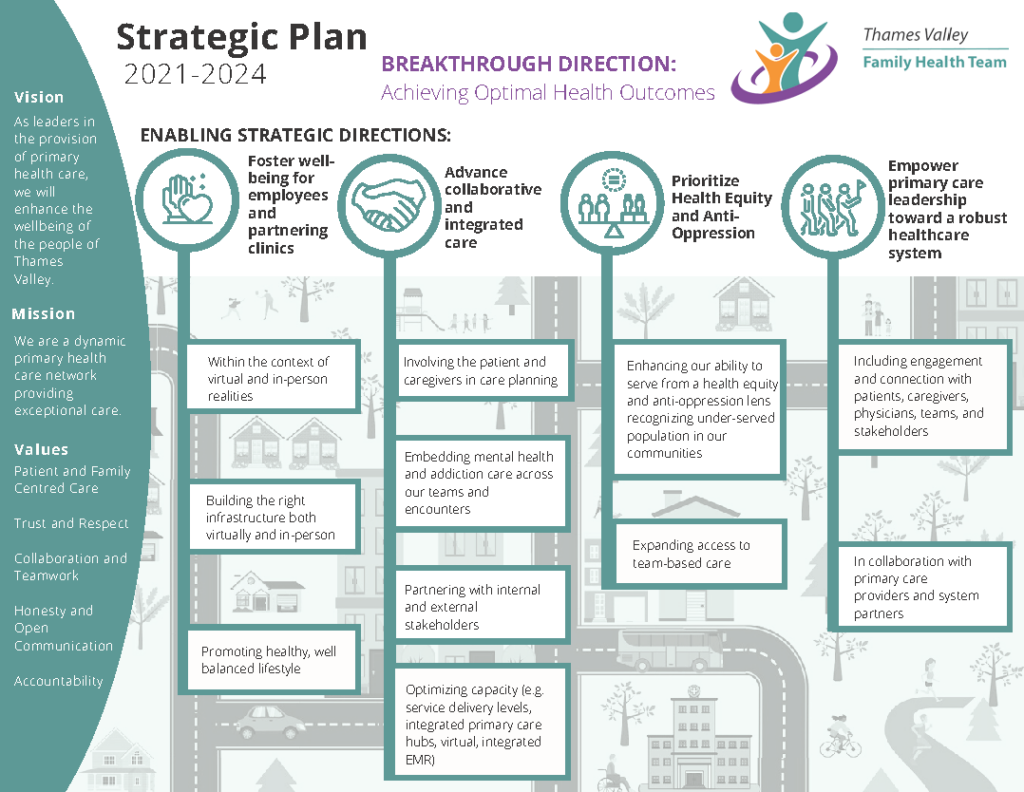We are proud to share our strategic plan for 2021-24.
For the overall strategy, please click on the image to the right. For more details, please see below.
If you have any questions about what you read, please contact us at [email protected].

Strategic Direction 1: Foster well-being for employees and partnering clinics
Context
- Within the context of a virtual and in-person realities
- Building the right infrastructure both virtual and in-person
- Promoting healthy, well-balanced lifestyle
3-Year Outcomes / Results
High level of staff satisfaction (on well-being, infrastructure (tools and resources), total compensation, communication)
- High level of retention rates
- Increase participation of clinical partners on PD offerings and joint teaching opportunities
- Staff led; annual well-being work plan delivered each of 3 years
- Increased collaboration with clinical partners on FHT offerings (e.g., back office/support related – wellbeing initiatives, digital platforms, practice management)

Strategic Direction 2:
Advance collaborative and integrated care
Context
- Involving the patient and caregivers in care planning
- Embedding mental health and addiction care across our teams and encounters
- Partnering with internal and external stakeholders
- Optimizing capacity (e.g. service delivery levels, integrated primary care hubs, virtual, integrated EMR
3-Year Outcomes / Results
- Implement measured care focused on patient and outcomes (informed by QI and patient goals, OHT priority areas)
- Patient, Client & Caregiver Engagement – engage patients, clients, caregivers in experience based design/strategy
- Bring forward policy to embed Experience Based Design (Co-Design) in program and service design
- Increase # of times patients are involved in decisions
- Patients are collaborating with professionals to improve their own care
- Implementation of the Therapeutic Alliance Survey and sustained QI based on results
- Increase number of people who provide feedback on our services
- Shared-Decision Making Training is embedded in our practice
- Mental health & addiction assessment and integration pathways are embedded in our practice
- Increase number of co-facilitation/ hosting of programs with and by external partners and peers
- Increase number of external partners in our collaborative care planning
- Increase number of written partnerships that improve care pathways
- Resources optimized through regional hubs, virtual care, moving toward single EMR and stratification of resources as part the strategic plan
- Increase collaboration with patients and primary care partners

Strategic Direction 3:
Prioritize health equity and anti-oppression
Context
- Enhancing our ability to serve from a health equity and anti-oppression lens recognizing under-served population in our communities
- Expanding access to team-based care
3-Year Outcomes / Results
Increase diversity to reflect the communities we serve at governance and staff levels
- All staff will receive training and coaching on health equity, anti-oppression and trauma-informed practice
- Welcoming, inclusive, anti-oppression practices are incorporated with a focus on safety for Indigenous and Black Communities
Expanding access to team-based care
- System for stratification of resources to serve those with the greatest need is in place (stepped care approach)
- Increase use of technology to reach a greater number of patients
- Each region has a primary care hub[1] to expand access to team based care
[1] Future integrated team based primary care sites for TVFHT

Strategic Direction 4:
Empower primary care leadership toward a robust healthcare system
Context
- In collaboration with primary care providers and system partners
- Including engagement and connection with patients, caregivers, physicians, teams, and stakeholders
3-Year Outcomes / Results
Three functioning primary care alliances/ associations (Elgin, London-Middlesex, Oxford) are in place — demonstrates governance, ability to speak with one voice, set priorities
- Primary care providers are leading primary care alliances (and are properly compensated)
- Single entity EMR will be offered to providers
Letter of Engagement (service level agreement) is signed with all physicians
Enabling TVFHT primary care providers to take on leadership roles in the health care system

